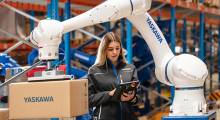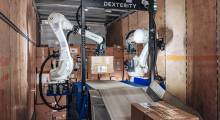Linde Material Handling (MH) and robotics specialist Balyo have agreed to enter into a strategic partnership.
With this cooperation, Linde MH seeks to intensify its activities in the field of robotic industrial trucks, while Balyo aims to achieve market penetration for its innovative technological solutions. The two companies are planning to collaborate in development, manufacture and sales under the umbrella of “Linde robotics,” which is expected to extend Linde MH’s solution expertise in this field.
“Our aim is to extend our range of automation solutions to offer our customers solutions having different levels of complexity,” said Christophe Lautray, chief sales officer at Linde MH. “With Balyo we were able to persuade the technology leader in robotics for materials handling equipment to cooperate exclusively with us so that we can now combine the best of both worlds.”
“Our plan is to integrate Balyo’s innovative technology into most of our products step by step, whilst utilising synergies in production and sales at the same time,” Lautray said. “At the LogiMAT trade show, we will be presenting the first jointly developed products, with more to follow soon.”
“Linde MH is the European market leader in industrial trucks and comprises great product knowledge and a very densely knit consulting and service network,” said Fabien Bardinet, CEO of Balyo. “For us, they are the ideal partner to create the most advanced robots to serve best our common customers. At Balyo, we produce a unique driving system for materials handling, together with Linde MH we will offer disruptive solutions to help our customers to optimize their in-house material flows and achieve major cost savings.”
Based on standard Linde trucks, robots driven by Balyo technology do not require any navigation infrastructure such as laser reflectors, tracks or magnets. Rather, they use an embedded autonomous laser-assisted technology, which relies on structural features such as walls, racks or columns. This technology allows for fast and easy installation. First, the warehouse is charted and the data is converted into a two-dimensional map. Next the order of the routes through the warehouse and the missions assigned to the robots are defined. Equipped with laser, processor unit and digitized map, the vehicle locates itself in real time.
Changes in the warehouse, missions or routes can be implemented at any time. A comprehensive software suite ensures a full integration in the warehouse environment, including connection of the robots to WMS and ERP and a simple control of the robots for the warehouse operators via an intuitive user interface.
Article topics
Email Sign Up















